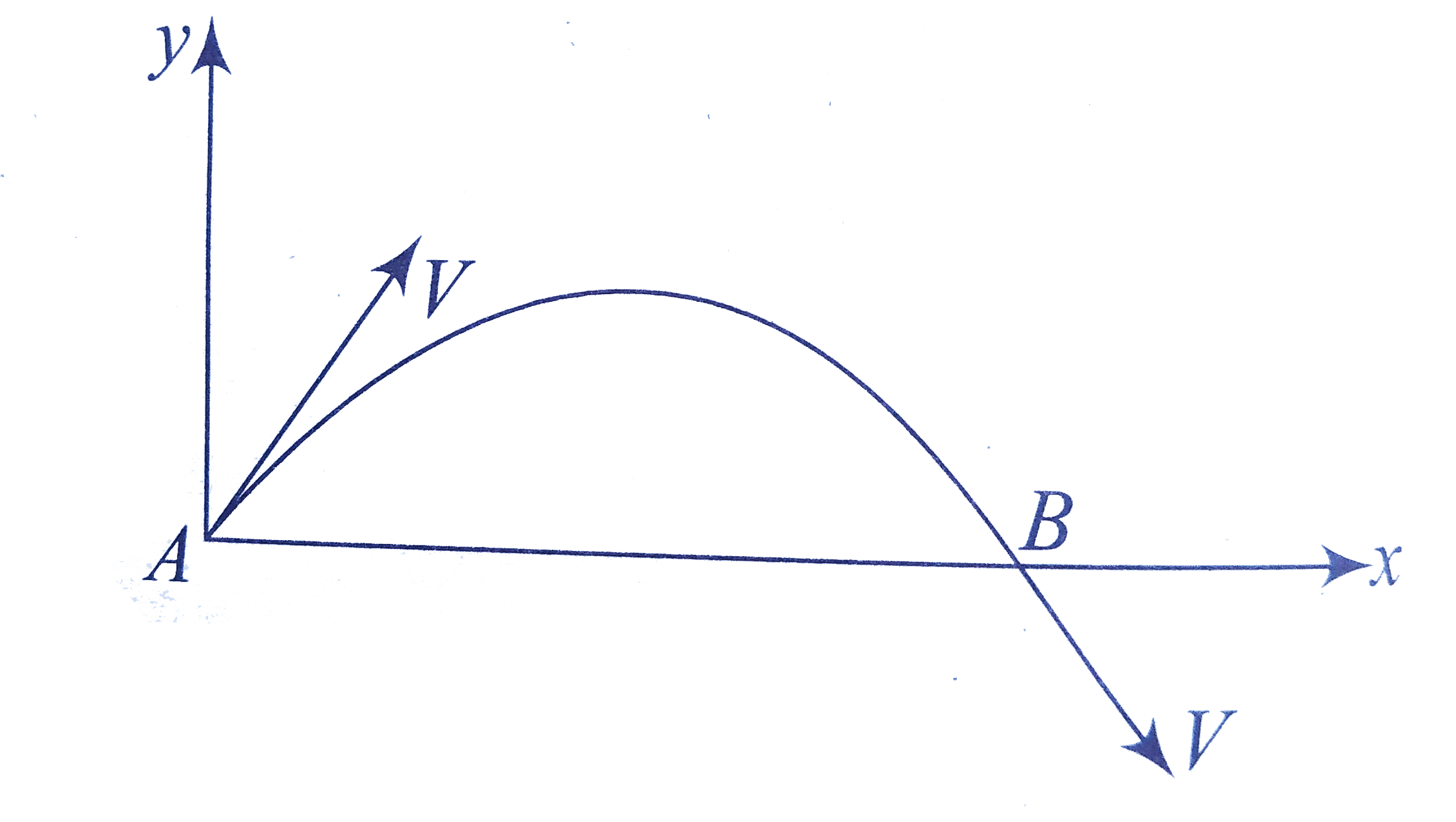A projectile is projected in air with initial velocity →v=(3ˆi+4ˆj) m/s from the origin. The equation of trajectory of the projectile is given as (g=−10ˆjms2) (neglect air resistance )
y=12x−5x2
y=3x−4x2
9y=12x−5x2
12y=12x−5x2
To find the equation of the trajectory of a projectile projected with an initial velocity →v=3^i+4^j m/s from the origin, we can follow these steps:
Step 1: Identify the components of the initial velocity
The initial velocity can be broken down into its horizontal and vertical components:
- vx=3m/s (horizontal component)
- vy=4m/s (vertical component)
Step 2: Write the equations of motion
For the horizontal motion (x-direction), since there is no acceleration:
x=vx⋅t=3t
For the vertical motion (y-direction), we use the equation of motion:
y=vy⋅t−12gt2
Substituting g=10m/s2 and vy=4m/s:
y=4t−12⋅10⋅t2=4t−5t2
Step 3: Solve for time t in terms of x
From the equation for horizontal motion:
t=x3
Step 4: Substitute t into the equation for y
Now substitute t=x3 into the equation for y:
y=4(x3)−5(x3)2
This simplifies to:
y=4x3−5(x29)
y=4x3−5x29
Step 5: Combine terms to form the final equation
To combine the terms, we can express both terms with a common denominator:
y=12x9−5x29
y=12x−5x29
Final Equation of Trajectory
Thus, the equation of the trajectory of the projectile is:
9y=12x−5x2
The initial velocity can be broken down into its horizontal and vertical components:
- vx=3m/s (horizontal component)
- vy=4m/s (vertical component)
For the horizontal motion (x-direction), since there is no acceleration:
x=vx⋅t=3t
y=vy⋅t−12gt2
Substituting g=10m/s2 and vy=4m/s:
y=4t−12⋅10⋅t2=4t−5t2
From the equation for horizontal motion:
t=x3
Now substitute t=x3 into the equation for y:
y=4(x3)−5(x3)2
This simplifies to:
y=4x3−5(x29)
y=4x3−5x29
To combine the terms, we can express both terms with a common denominator:
y=12x9−5x29
y=12x−5x29
Thus, the equation of the trajectory of the projectile is:
9y=12x−5x2
Topper's Solved these Questions
Similar Questions
Knowledge Check
A projectile is given an initial velocity of (ˆi+2ˆj)m/s, where ˆi is along the ground and ˆj is along the vertical . If g=10m/s2, the equation of its trajectory is :
Ay=x−5x2By=2x−5x2C4y=2x−5x2D4y=2x−25x2A particle leaves the origin with initial velocity →v0=11ˆi+14ˆjm/s. It undergoes a constant acceleration given by →a=−225ˆi+215ˆjm/s2.
When does the particle cross the y-axis ?A2 secB4 secC5 secD7 secA particle has initial velocity (3ˆi+4ˆj) and has acceleration (0.1ˆi+0.3ˆj). Its speed after 10s is.
A7 unitB7√2 unitC8.5 unitD10 unit
A projectile is given an initial velocity of (ˆi+2ˆj) m/s ,where hat i is along the ground and hat jis along the vertical.If g=10m/s^(2) ,the equation of its trajectory is
View SolutionA particle has initial velocity →v=3ˆi+4ˆj and a constant force →F=4ˆi−3ˆj acts on the particle. The path of the particle is :
View SolutionAt a height 0.4m from the ground the velocity of a projectile in vector form is →v=(6ˆi+2ˆj)ms−1. The angle of projection is
View SolutionA motor boat is going in a river with a velocity →V=(4ˆi−2ˆj+ˆk)ms−1. If the resisting force due to stream is →F=(5ˆi−10ˆj+6ˆk)N, then the power of the motor boat is
View SolutionThe velocity of a projectile at the initial point A is (2ˆi+3ˆj)m/s.Its velocity (in m//s) at point B is

View Solution

